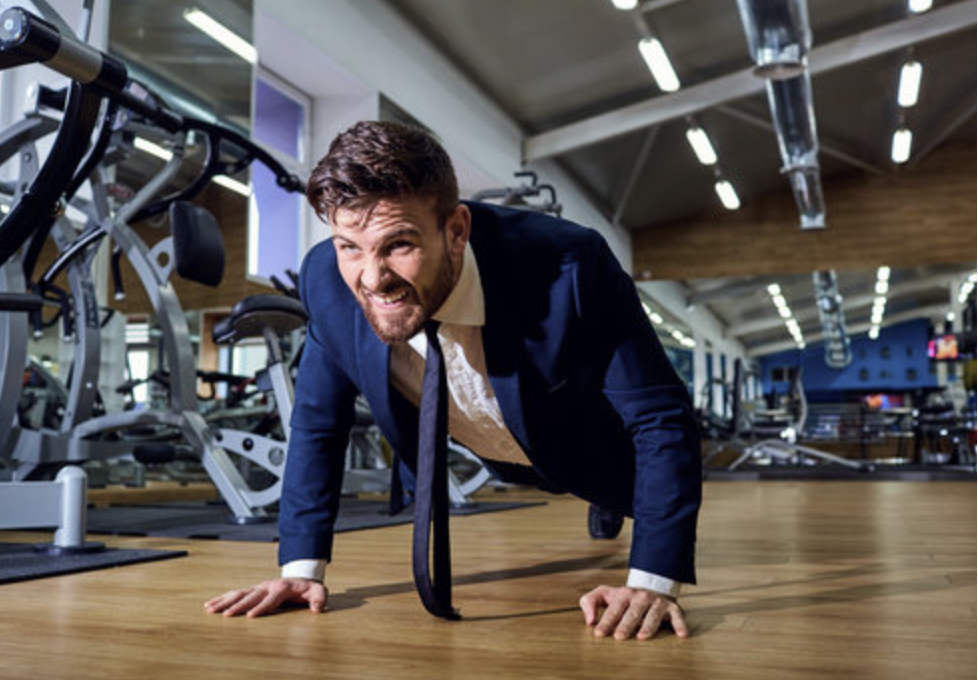Building strength through synergy is the same as putting in the reps at the gym.
Do you go for runs? Lift weights? Do CrossFit? Or go boxing?
We all know a workout is essential for achieving peak physical fitness, that’s why even the doctor tells you to be active. This translates perfectly to business development where a cohesive, proactive marketing strategy is crucial for the health and growth of your business. In the world of fitness, neglecting any aspect of your routine can lead to imbalanced results. Similarly, in marketing, focusing solely on one channel at the expense of others can stunt your business’s potential. The solution must be holistic, one that hits multiple elements not leaving anything out to dry.
Let’s explore how the foundations of content marketing—social media, website-based learning, and paid media—work together like the components of a comprehensive workout plan.
Social Media: The Cardio of Your Marketing Strategy
Think of social media as the cardio in your marketing workout. Just as varied cardio exercises—running, cycling, swimming—target different muscle groups, each social media platform reaches distinct segments of your audience, engaging them with tailored content that resonates with their interests and needs. Platforms like Instagram, Twitter, YouTube, and LinkedIn, to name a few, increase your brand’s heart rate, pumping energy into your marketing efforts and building consistent engagement with your audience. Moreover, active social profiles show that the company is alive and the content goes to interest potential clients via market education, promotional boosts, and user-generated content strategies.
How can you consider which channel is best for you? Here are a few thoughts:
Instagram amplifies visual storytelling, showcasing the aesthetic and emotional aspects of your brand.
Twitter keeps the conversation going with quick, engaging updates, ensuring your brand stays on the minds of your audience.
YouTube deepens connections through detailed tutorials and testimonials, building trust and credibility.
LinkedIn promotes a more serious, enterprise position to relevant professional audiences.
Of course, other platforms also have their worth but these are a few worth mentioning.
The Website: Your Marketing Strength Training
Your website is the strength training segment of your marketing regimen. It builds the muscle behind your brand, offering in-depth content that educates, informs, and solidifies your authority in the industry. Beyond your website acting as a company calling card of sorts, it also can house a variety of content forms, from blog posts and articles to webinars and e-books. This content, like the squats and bench presses of a weight routine, not only boosts your SEO, making you more visible to those searching for your services online, but also strengthens the bond with your audience by providing value beyond your products or services.
Likewise, as your audience explores your social media or finds your company via paid media, they will likely want to visit your website. After all, the website provides needed authority and verifies for them that what they saw in social media, or an ad, is actually real and trustworthy. The better the website is at demonstrating the product or service’s unique value proposition, the more trust the client will have in the company and the more likely they will move forward to a transaction.
Paid Media: The Supplements Enhancing Your Routine
Paid media acts like supplements to your workout, enhancing your efforts and ensuring you get the most out of every activity. As protein powders and vitamins can support your physical growth and recovery, paid advertisements boost the reach and effectiveness of your organic content, as well as traffic to your website. Targeted ads on Facebook, Google, LinkedIn and other platforms ensure that your message reaches a wider, yet still relevant, audience, optimizing your marketing spend for better ROI.
Creating a Steady Marketing Plan
A well-rounded workout routine is essential for achieving overall fitness, and a balanced marketing strategy is crucial for business health and growth. By integrating social media, website content, and paid media, you can create a cohesive and dynamic marketing plan that builds brand strength, endurance, and flexibility. Relying solely on social media (cardio) without strengthening your website’s content (strength training) can leave your strategy feeling weak and uncoordinated. Similarly, pumping resources into paid media (supplements) without a solid foundation of organic engagement can lead to unsustainable growth.
The magic happens when these elements work together. Your social media efforts drive traffic to your website, where deeper engagement occurs. The insights gained from both organic interactions inform your paid media strategies, making each ad dollar work harder. This integrated approach ensures a healthy, robust marketing strategy that grows stronger over time.
Remember, the goal of your marketing workout isn’t just to flex your business muscles but to engage and nurture your audience, transforming casual browsers into loyal customers. So, lace up your sneakers, hit the marketing gym, and start working out your strategy today.
The results?
A healthier, more vibrant business ready to compete at the top of its game!
This guest blog post was written by Jordan Kastrinsky, co-founder of JB Upscale, with branches in Israel and Colorado, offering services to enhance digital operations including branding, media management, marketing campaigns, and UI/UX design and development. Want to upscale your design and marketing? Click this link to contact JB Upscale today!


